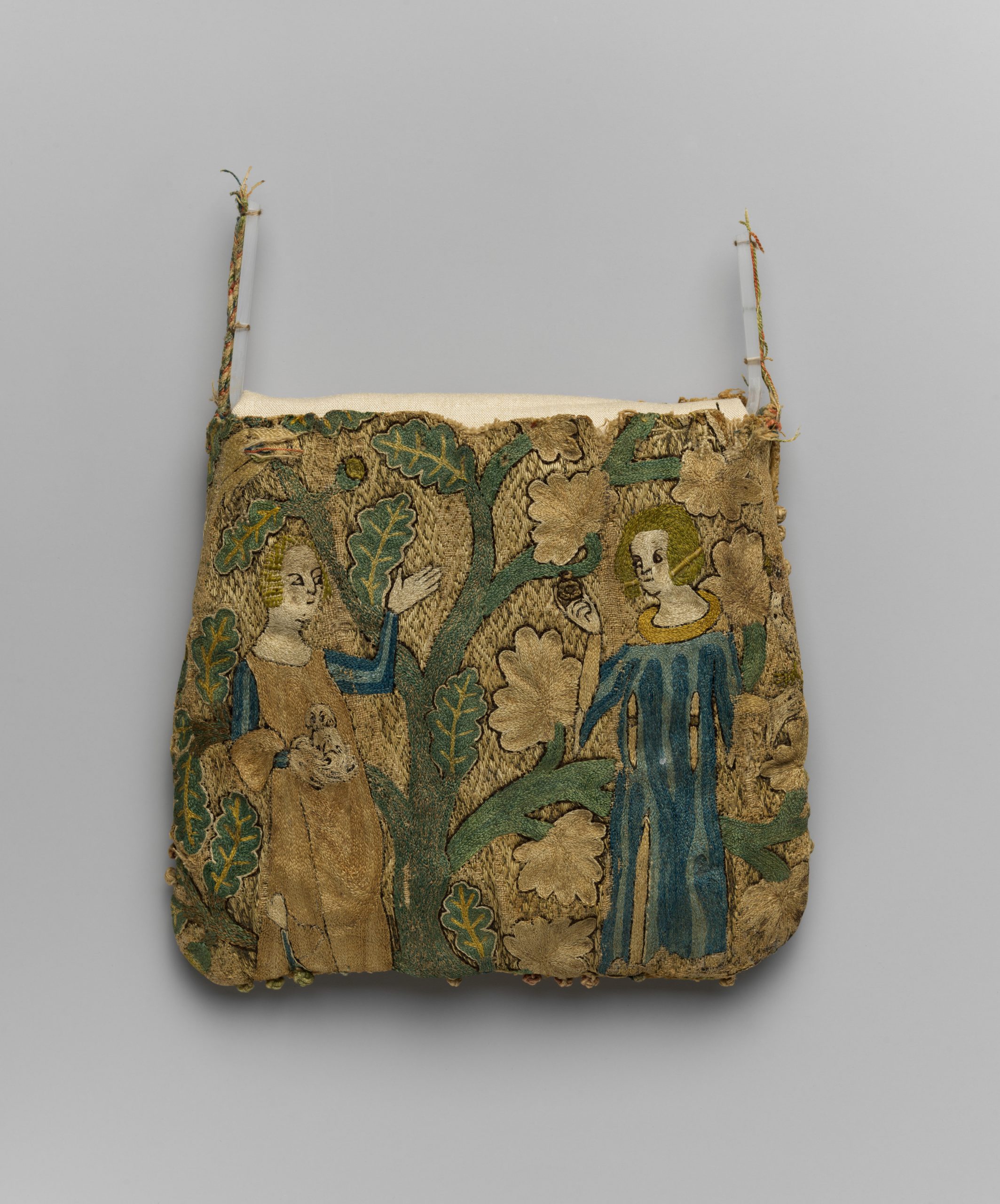Silk Production
Mapping the concentrations of workers in the silk industry, where non-elite women were central figures, helps to highlight neighborhoods where women including Beguines and many others featured prominently. Sharon Farmer’s excellent book The Silk Industries of Medieval Paris demonstrates that women, and in particular immigrant women, contributed their expertise and labor to the production of silk, its processing, spinning, dying, weaving, embroidery, and other decoration. This was intensive work that involved long hours and expertise acquired through life-long practice. Farmer locates the major neighborhoods of silk production using tax records, and she finds a concentration of workers on the Right Bank radiating out from the area between the rue Saint-Denis and the rue Saint-Martin up to the city wall. Luscious French silk objects of ornament survive from the early fourteenth century like a silk, linen, and gold leaf purse featuring an embroidered image of two lovers on either side of an oak tree. Evoking Adam and Eve as much as the ubiquitous couples that ivory carvers depicted on popular mirror backs, the two gather acorns and gesture to each other in communication. https://www.metmuseum.org/art/collection/search/468622
